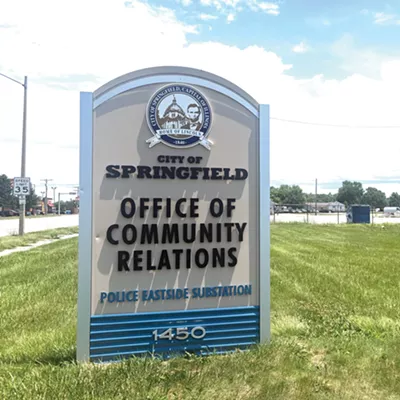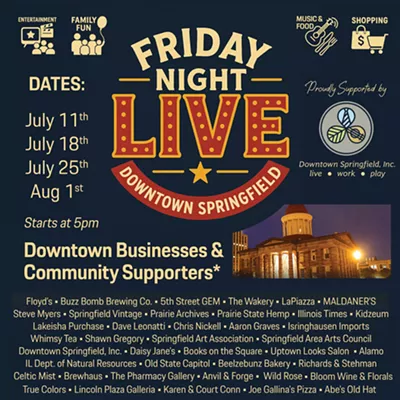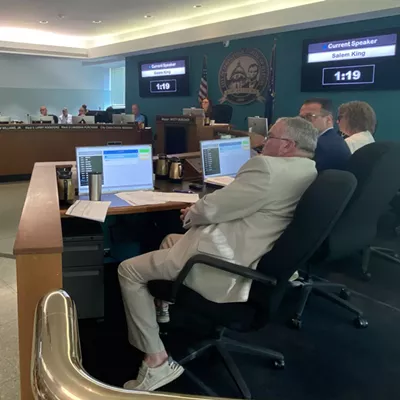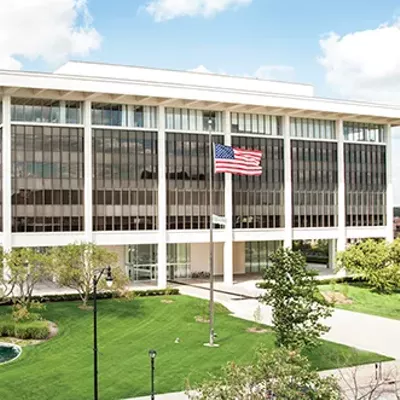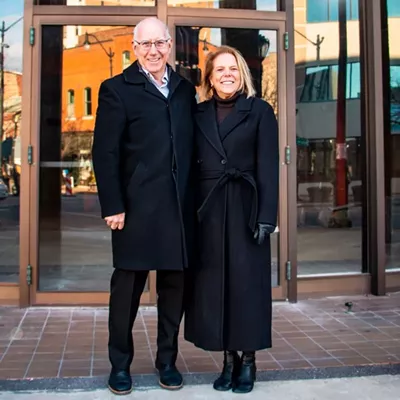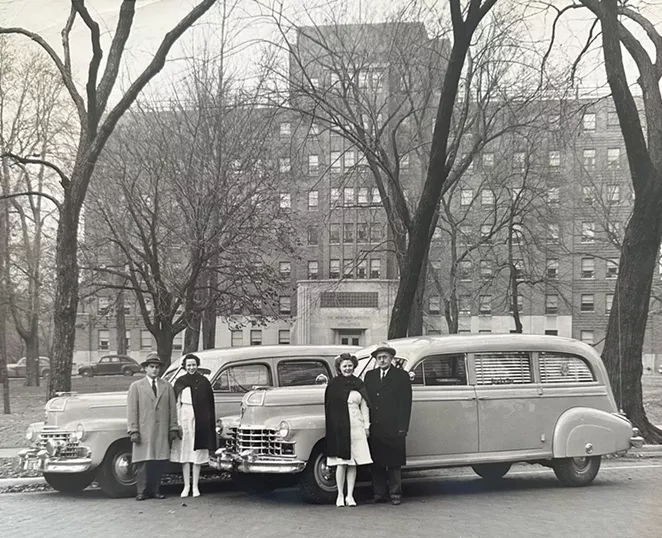
Today, the sick and injured are transported in mini-emergency rooms on wheels with staff trained to care for traumas. But in the old days, ambulances were horse-drawn wagons, and later, hearses with a driver who couldn't do much more than give a bandage. In much of the country, from the late 1800s through the 1960s, the police, private entrepreneurs and funeral homes provided ambulance service – forget paramedics and EMTs, they didn't exist until the 1970s.
Before that, it was "scoop and run," said Terry Petty, who's worked with Bisch Funeral Home since 1968, the last year it offered ambulance service. The aim was to pick up the patient and get them to the hospital as fast as possible. In the earliest days, fast was relative and patient comfort was, too.
At the turn of the 19th century, Springfield police got the latest technology — a "new patrol wagon and ambulance" made at the local carriage factory, according to the June 25, 1900, issue of Illinois State Journal. The wagon had an "ambulance attachment" with a "stretcher, blankets, top and side curtains," as well as electric lights and rubber tires, which would "prevent jarring of the sick and injured."
By 1910, Bisch Funeral Home was in the ambulance business, according to an article in the Sept. 22, 1910, Illinois State Register. In those days, papers reported on local accidents and citizens' health issues, including whose ambulance took them to the hospital.
Funeral homes got in the business out of practicality. "Hearses were used for ambulances because they were the only vehicles in town where a body could be laid flat," said P.J. Staab of Staab Funeral Homes in the May 23, 2018, State Journal-Register. Staab ran its own ambulance service for a while.
Local service sped up in late 1913 when Dodds Brothers Undertakers advertised in the Register on Christmas Eve that it bought Springfield's "only automobile ambulance" and charged the "same price as a horse drawn rig."
A couple decades later everybody was in the ambulance business, according to the National EMS Memorial Foundation. In the 1930s and 40s, it was an "unregulated hodgepodge of service ... with fire departments, hospitals, funeral homes, towing companies and volunteers setting their own standards. Transportation of patients remained the primary focus until after the mid-century."
Locally, several funeral homes ran an ambulance in the 1930s, including: Ellinger and Kunz, O'Donnell and Staab, Bisch and Son and W.T. Vancil, according to newspapers of the time.
Bisch flew ahead of competitors in the late 1940s when it bought a "twin-motored Cessna" for an aerial ambulance, reported the Sept. 2, 1947, Register and promised that a "registered nurse" would accompany the patient in flight.
Auto ambulances were the norm, though. That was the case in the 1960s when Petty worked in funeral homes. Some used what they called combination vehicles, which served as a hearse and ambulance, he said. "You got back from a funeral, put the red light on top, put the cot in, the oxygen in, your medical kit, set the attendant seat up and you'd run your ambulance calls."
Jim Dixon was a teenager in the 1960s when he went on ambulance calls for the now-defunct Willis Funeral Home in Auburn. "There were times when I went by myself. I would pull out of the garage at the funeral home and hope the local police officer would see me, so he could help me load. Then it was go like heck to the hospital in Springfield."
The sole medical training Dixon and Petty had was basic first aid, the only training available. "We could give CPR and Band-Aids," said Petty.
Dixon said, "That's why it was important to drive like heck."
One time, Petty had a patient die before they got to the hospital, but that was rare, he said.
Bisch was the last funeral home in Springfield in the ambulance business, that ended in 1969. "Running an ambulance was expensive," Petty said. They had to staff three people at night, one to take ambulance calls at the funeral home and two to respond to them. A 2011 book about funeral homes, Humble Heroes, said ambulances were a nonprofit venture for them, offered more to meet a need than make money.
The last year Bisch had ambulances, it charged $15 a call, Petty said. "It didn't make any difference if it was a transfer (from a nursing home to a hospital, for example) or an emergency call at 2 a.m. When we got out of the business, two companies – Superior and America, took over our calls."
Two years later, in 1971, Illinois improved trauma care under Gov. Richard Ogilvie and started to train EMTs, among other efforts, according to the Illinois Department of Public Health website.
Tara McClellan McAndrew is a freelance writer in Springfield who enjoys learning about local history.

